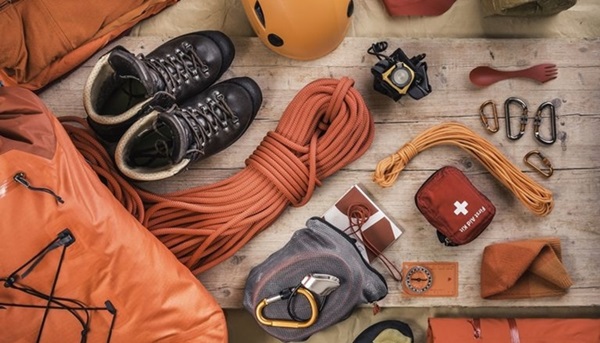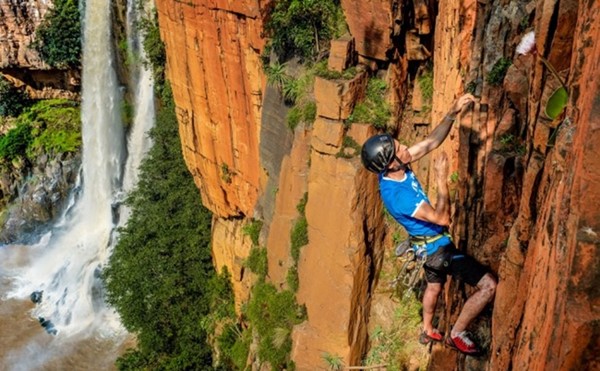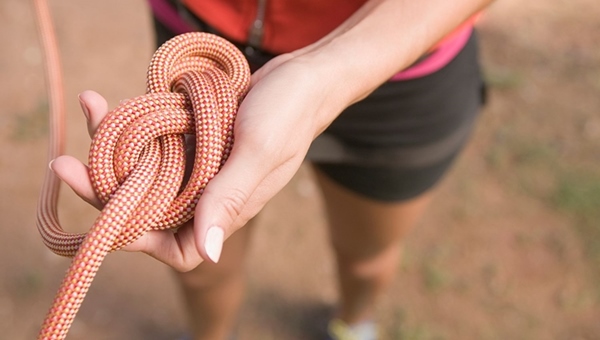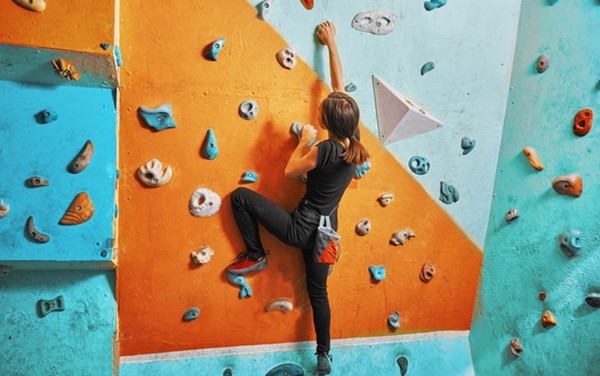Get the Gear and Take to the Heights
Rock climbing is an excellent whole-body workout. However, different styles require different types of gear. This guide will help you choose basic rock climbing equipment.
Rock climbing comes in many disciplines and styles. Some of them are outright dangerous. Others are accessible to everybody who is reasonably fit.
Whatever style you choose, you can rest assured that rock climbing is an excellent whole-body workout. It tests the endurance of your muscles and of your mind. And if you take to outdoor rock climbing, you will be rewarded with breathtaking views too.

If you are a beginner, you will probably want to start with indoor climbing, and then graduate to outdoors. In either case, reliable gear is of paramount importance. Rock climbing equipment is not cheap and different techniques and styles require different types of gear. Therefore, think carefully before buying. This guide will help you choose the basic (and not so basic) rock climbing equipment.
Rock Climbing Attire
Your rock climbing clothing needs to be loose enough to allow full range of motion, without getting in the way of you or the rope. Choose the fabric that is breathable, wicks sweat and dries fast. When climbing outdoors, bring clothes for different weather conditions, just as you would for hiking.
Rock Climbing Shoes
Rock climbers wear specially designed shoes that increase the grip on a rock face or a climbing wall. They are usually only a few millimetres thick and fit snugly around the foot.

If you practice different styles of climbing, you will need several types of shoes. For example, downturned shoes are for vertical rock face, and the shoes with foam padding on the heels are for descents. Rock climbing shoes are for climbing only. Walking long distances in them damages the shoes and hurts your feet.
Rock Climbing Harness
You need a climbing harness for all rock climbing styles except bouldering. (Bouldering involves climbs that are high enough to be exciting, but not so high that a fall could cause a serious injury or be fatal.) A harness consists of two basic parts, a waist belt and leg loops, and it has lots of tie-in points, buckles, and loops. Gym harnesses are much lighter than outdoor harnesses.
Rock Climbing Ropes
Rock climbing ropes are arguably the most important single piece of climbing equipment. There are two basic categories of ropes, dynamic and static. The kind of rope you need depends on where you go climbing and on your style of climbing.

Indoor wall climbing ropes are usually between 30 and 35 meters long. Standard rope lengths for outdoor climbing are 60, 70 and 80 meters. Outdoor climbers also need a good bag for the ropes, in order to keep them in good condition.
Rock Climbing Helmet
A helmet made specifically for this activity is necessary when you go rock climbing in nature. These helmets are to shield your head from the falling rocks and debris, as well as to protect your life in the case of a fall.
Other Rock Climbing Equipment
Carabiners are essential in rock climbing. A carabiner is a strong metal snap-link made of aluminium or steel. Its function is to connect the different parts of the climbing gear to each other and to the climber.
Quickdraws consist of two carabiners connected by a length of webbing. This webbing provides some extension to gear placements, allowing the rope to run more freely. Most climbers carry several quickdraws.
Belay device helps the belayer (the person on the ground who secures the climber) to control the rope, releasing it as the climber ascends. The belayer can also use the belay device to arrest a fall and lower a climber.
Protection devices, known as rock protection or pro, allow climber to place temporary anchor points on the rock. Nuts, hexes, camming devices, and tricams are all part of protection devices.
Chalk helps climbers to improve their grip. For outdoor rock climbing, it is considered good form to use chalk that matches the colour of the rock. Chalk is carried in a small pouch attached to a waist belt.
Gloves are not essential, but many climbers prefer to use them, especially when abseiling (or rappelling) to protect their hands from rope burns.
Crash pads are used in bouldering. These dense foam pads are placed under the climber to cushion a fall or a jump.
All climbing equipment has a limited life span. The more you climb, the faster your gear will wear out. Check it regularly and replace when needed.
